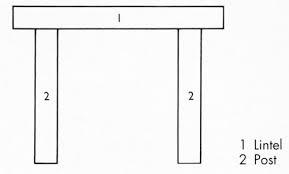A Bird in the Hand
My Approach to Building Wealth
When I think about investing – whether it is investing my time or my money – I begin by asking myself: What sort of thing is it that I’d be investing in?
Is it a business – like Agora Publishing or Microsoft? Or is it a financial asset – like gold or Bitcoin or a work of art?
I make this distinction because it is very fundamental to how I think about wealth building.
There is a big difference between investing in a business and investing in any other sort of financial asset.
A business is more than a financial thing whose value fluctuates based on supply and demand. A business is dynamic and operates with motivation and intent. It functions as a natural organism, like a plant or an animal, because it is a natural organism, composed, as it is, by natural beings.
A business has a purpose – which is to sell its products and services at a profit. It does this through constant change and adaptability to the environment within which it exists. Cash flow is its life blood. Customer satisfaction is its inevitable and evolutionary purpose. And profit is how it measures its health.
Financial assets like gold or cryptocurrencies do not function as natural organisms. They are not conscious. They have no intrinsic purpose. They are not capable of making a profit. Their value depends entirely on how much, at any given time, people are willing to pay for them.
Investments vs. Speculations
When I buy stocks, I am buying shares in ongoing businesses. When I buy corporate bonds, I am making loans to such businesses. I call these sorts of transactions investments.
When I buy gold (as I have) or cryptocurrencies (as I have) or art (as I do all the time), I am buying an asset whose value I hope will appreciate. The chance of that happening depends not on anything the asset does, but on the buying public’s perception of its value. However clever I think I may be in guessing future demand for the asset, I don’t have any real idea of whether that will happen. I don’t know its revenue history or its P/E ratio because it has none. For that reason, I consider such transactions to be speculations.
Prudent wealth building, in my view, is a matter of giving preference to transactions whose outcomes are relatively predictable. And that means investments that I can understand relatively well and, if at all possible, have some control over.
These two factors – knowledge and control – are how I rate my likelihood of success in making all my financial decisions.
Another way of thinking about this is to look at wealth building opportunities in terms of appreciation and income. When I buy a work of art or a parcel of undeveloped land, I am hoping that its value will appreciate. When I buy a bond, I am counting on the income it will give me over time.
I would much prefer owning a building I can rent out than a parcel of land, because the former provides both income and potential appreciation, while the latter gives me only the possibility of value gain.
My favorite investments are those that offer both income and appreciation and that I fairly well understand and at least partially control.
That doesn’t mean I don’t speculate. I do. But I try to keep the balance between investments and speculations to about 80/20.
Among the speculations I’ve made over the years, some – especially those that have a long history of appreciating – have proven more reliable than others. Gold is such a speculation. It isn’t a business. It doesn’t produce income. But it is considered by the entire world to be a store of value and it has a 2,000-year history of maintaining its value. That makes gold (and other precious metals) a priori safer than cryptocurrencies. I can say the same thing about art.
But between those two, I prefer my art because there is absolutely nothing I can do to affect the price of gold, whereas there is something I can do (promotion and advertising) to increase the value of my art.
If I were to show you my portfolios of financial assets, you would see a direct correlation between the amounts I have invested in each and the four factors of knowledge/control and income/appreciation.
The largest portion of my wealth resides in income-producing businesses. After that is rental real estate. Both portfolios provide me with all four factors.
Below that – in terms of the percentage of my net worth – are my stock portfolios, which provide both income and appreciation, and about which I can know something, but over which I have no control. Then I have my bonds, which are like owning businesses, but without the appreciation.
Below stocks and bonds are all my speculations. My favorite is art, because, as I said, I know a good deal about the art I buy and I can, to some extent, affect the price I get for it. After that, it’s gold. I have no control over its value, and it provides no income. But though it may not skyrocket in value, it’s more than likely to hold its own.
And then, below these assets, are such things as cryptocurrencies and (if I end up investing in any) NFTs. I put these at the bottom because they aren’t businesses, they don’t create profits, they don’t provide income, and the possibility that they will appreciate is entirely out of my hands.
To Be Sure…
I get why many people like NE are so excited about the rapid advances in technology that are creating new money-making opportunities like cryptocurrencies and NFTs. Huge fortunes have always been made by speculating on future trends.
But it’s not in my nature to use my time and money that way. My wealth-building philosophy is summed up in a very simple phrase: “A bird in the hand is worth two in the bush.”
Mine is not a strategy to get very rich, very quickly. But it does offer the advantage of a great degree of relative safety, where you can pretty much guarantee (engineer) that your wealth will continue to grow, year after year.
I did invest cryptocurrencies – five of them – several years ago. And they have appreciated by more than 600%, which is something my more conservative investments have rarely, if ever, done. And, yes, I sometimes think I wish I had invested more than one-tenth of 1% of my net worth in them. But then I remind myself: My bird-in-the-hand strategy for building wealth has served me well over the years.
I will continue to speculate now and then when someone like NE presents a persuasive case. But when I do, I will assume that I’m going to lose all of my money. With that thought in mind to begin with, I can enjoy the ride without needing a positive outcome.


























